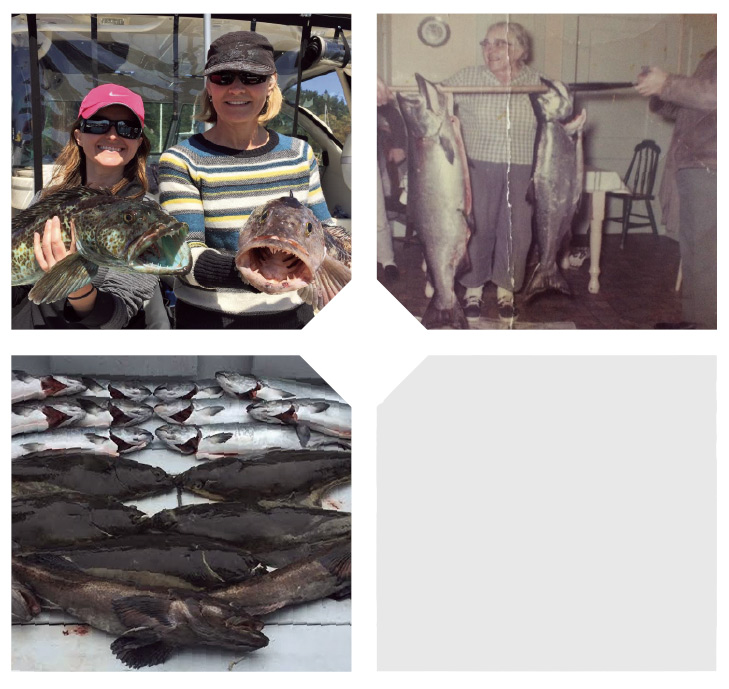June in the Northwest can be gray “JUNEuary” type weather, or it can begin the long, hot days of summer. Whether rainy or sunny, we’ve got opportunities to get groceries from the saltwater seafood section of our local waters this month. It’s time to get out on the water, warm up, dry out, and shake off all the moss we gathered in the long winter of 2017. As always, please research the state or provincial fishing regulations of the area you plan to fish before you go.
While we may have some halibut opportunities in the beginning of June in Washington, don’t bank on it. This is the month when many folks head north for extended trips in B.C. and Alaska. Salmon, rockfish, lingcod, and, of course, halibut are the attractions. Lodges and charters may be booked up, but a call can be worth it. Consider, of course, running your own boat by trailer, or even better, by water. A couple weeks in the beautiful waters to the north reeling in fish may be just what the doctor ordered to beat the blues from our long winter. Making these trips in your own vessel is a great adventure. Learn to fish new areas, and then barbeque your catch on the back deck while hanging out in an exotic locale. Maybe even mingle with some interesting locals. Makes me want to fuel up and go!

Top Left: June is the month when many Northwest folk trek farther north to destinations in B.C. and Alaska for a multi-species buffet.
Below: Ling cod is on the menu for June for sure!
Washington will have limited salmon opportunity in some coastal waters and in Puget Sound this month. As said above, check the Washington Department of Fish and Wildlife website for regulations before you plan a trip. Rockfish can also be caught in some coastal areas. June is lingcod time in many places in the Northwest. In the interior waters, fishing for these tasty toothies may be regulated to depths shallower than 120 feet of water. No biggie! Bouncing lead-headed jigs with curly tail plastics can be deadly. Find a drop-off, maybe with some kelp, and jig your offering from 30-120 feet downhill. Make sure to drift from shallow into deeper water or you will hang up. Cod will also take bait in this manner. In places like the San Juan Islands, we have a slot limit size of 26-36 inches. This lets the little guys grow and the big girls breed and make more ling. Out on the coast there aren’t the same restrictions. Cod fishing is often done in water over 300 feet with heavy pipe jigs. It’s very effective. Eat your catch of cod when it’s fresh. Before freezing, lingcod is a delicacy, the finest eating fish that swims in my opinion.
Don’t forget about the possibility of albacore showing up off the coast this month. Last year, right around my birthday of June 16, the water temperatures were right to get some longfins out of Westport, and it could happen again this year and possibly even earlier to the south. If your own boat isn’t set up for tuna, going on a charter is a great way to catch fish and learn the ropes from an experienced captain. Larger boats with overnight capability are available, or try one of the run-and-gun type six-pack charters for a day trip. These fish are an absolute line-ripping blast to reel in, and make great fresh sashimi or canned tuna treats.
Last, but not at all least, prawns rock on in the ‘Juans! Marine Area 7 West has been open for a longer duration in the spring and summer for the past few years. With longer open seasons (what I call the Canadian model), we see fairly heavy pressure when the season first opens, and then a sharp decrease. In my opinion, this would be the best way to manage almost all fisheries; control with conservative bag limits and slot sizes that let the bigger fish reproduce, then open up seasons for a longer time frame. This also takes out the danger of folks thinking they must go fishing no matter what the weather in these limited few-day seasons. Letting some common sense into the equation would help.
Next month is prime time for Chinook salmon fishing in the salt waters of the Northwest. We will look at where to find them and how to catch them. Until next time, let’s get out there and go get some!